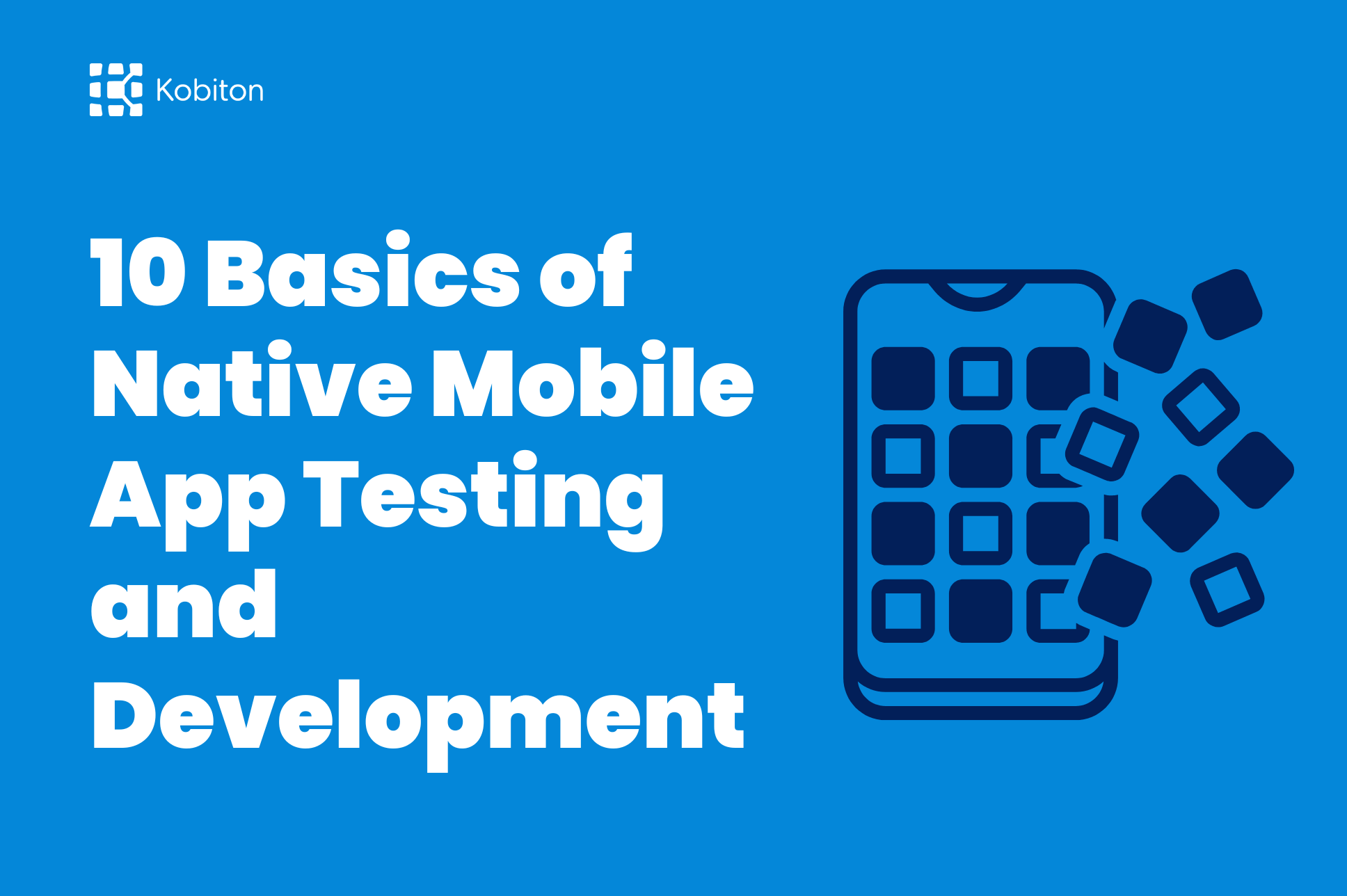
10 Basics of Native Mobile App Testing and Development

Cara Suarez
App development and production is driven by a singular, ultimate goal: mobile user experience. That’s why organizations of every size prioritize testing platforms and efficient QA processes — to detect potential issues, and reduce the likelihood of them impacting end users.
Native mobile app testing is one very important component of that development process. Here, we’ll share an overview of the topic.
TABLE OF CONTENTS
Testing Native Mobile Apps – Key Factors to Consider
Emulators, Simulators, or Real Devices?
Selecting Real Devices to Test On
Running Manual or Automated Tests
How to Test Native Mobile Apps – A Step-by-Step Guide
Start Testing Your Native Mobile Apps with Kobiton Today
So, what is a native app? A mobile native application is one installed directly on a device; it manages and stores data, either directly on the device or remotely (like with cloud-based storage).
Examples of popular native applications include Instagram, WhatsApp, Pokemon Go and Waze. Why? They have different software for each platform, or might work differently based upon the user platform’s own navigation app.
Frameworks that can be used for testing native mobile apps on an iOS platform include Appium Inspector, XCUITest, Calabash, and Espresso; frameworks to test them for the Android platform include (again) Appium, Calabash and Espresso, as well as Robotium and Ranorex.
Fortunately, Kobiton is able to help you make sense of everything. Kobiton is a mobile device testing platform, accelerating testing for mobile devices, and ultimately assisting clients with the delivery of native mobile applications on actual devices. After asking, “What is a native app?,” the next question is usually in regards to how a native mobile app might be tested.
Below are some of the factors you should consider during a mobile app development process.
As you might imagine, a decision to proceed with emulators, simulators, or real devices can mean different things.
For example, emulators generally provide a more controllable environment, and can easily simulate conditions like memory and battery power. Simulators also offer a great degree of control, while also providing native mobile application testing at a faster rate than emulators. And, the benefits of using real devices for native mobile testing include faster bug detection, more robust hardware support, and cross-platform mobile app performance testing.
Generally speaking, cloud-based testing on real devices is the best approach. For information about research methods and experiences that lead to that discovery, contact Kobiton today!
Here are a few of the factors to keep in mind as you determine which real devices to test on.
It’s important to choose popular devices, and those operating with different operating systems. Compatibility, memory, and processing power will also vary by device — so consider those factors as well.
The decision to run manual or automated native app testing brings with it several considerations; every organization has its own criteria for how it arrives at this decision.
Factors that impact that decision include application complexity, your core team size, how important you foresee continuous integration, and (of course) the budget you have to work with.
Ready to get started with your own mobile native application? Here are some of the steps you’ll take during a mobile testing strategy with Kobiton.
First, of course, is signing up on Kobiton. If you don’t have an account yet, simply request a trial.
Once signed on, you’ll be able to choose from a list of real devices which to run a test on. Don’t forget that Kobiton supports and can test both iOS and Android native applications.
Next, you’ll want to upload a native mobile app to the Kobiton platform. In Kobiton, select Apps. To upload an app using the Kobiton portal, select the + icon and choose an .apk, .aab, .ipa, or a .zip file from your computer.
It’s easy to test your native mobile applications on real devices, with Kobiton’s efficient mobile testing platform. Not only does it provide faster device access, but it also allows easier test automation, and it provides a better user experience for mobile app testing.
After completing a manual test, you can then review the resulting data in Kobiton’s intuitive session explorer. You can then turn that into scriptless automation, and run it against other types of devices.
There are a number of different tests that users might prioritize; it really comes down to your product’s specific needs, and those of your target audience, as well. It doesn’t matter whether you’re developing native iOS apps or Android native apps; all native mobile applications benefit from proper testing.
Are third parties able to compromise the security of your application? Depending upon the sort of information that your users will be providing to the application, safeguarding data might be your first priority. Many of the most downloaded apps of all time start here.
What products are your users going to be accessing your application from? Understanding compatibility for those devices can make or break any product’s launch.
We all understand the term “user interface” (UI). The better a UI, the more likely an end user will enjoy using the application. UI design and testing can make or break the success of any software development — it literally includes anything that your end-user might interact with. UI testing is also another term for visual testing, which is how the UI changes across devices.
At Kobiton, we understand the significance of thorough UI testing, and know how vital it can be to understand tools and methods that successfully get your products into the hands of App Store users.
Software requirements will likely vary between users, and functional native mobile testing ensures that a product works for those requirements.
Aligning digital product functions with documentation of how it should occur is the objective of documentation testing.
Recovery testing occurs when an engineer wants to find out how a system is able to recover after a failure — like when it crashes. During this type of test, data is uncovered about the amount of time it takes for a system to recover.
Performance testing is especially helpful in the development of game applications, although it evaluates an application’s stability and responsiveness under any type of workload. Think of it like a stress test! Android native apps and native iOS apps can all benefit from thorough performance testing.
Does your application work as intended, no matter the browser or operating system? Compatibility testing measures its ability to function in different settings.
As its name suggests, usability testing determines how user-friendly an application can be. It can evaluate intuitiveness, and anticipate what customer experience ratings might be like. User experience testing – or usability testing – takes place with end-users in mind. It determines an app’s intuitiveness and how a resulting customer experience might rate.
It’s important that organizations prioritize end-user preferences about an app, including components like appearance and personalization.
Beta testing a mobile application concentrates on discovering if software meets user expectations, and is ready for release; it applies equally to Android native applications and iOS native apps.
No matter which mobile app performance testing strategy is right for you, Kobiton professionals specialize in bringing the technical world of mobile app development testing down to earth. Call us today, to speak with a representative — or contact us via email for a free demo.